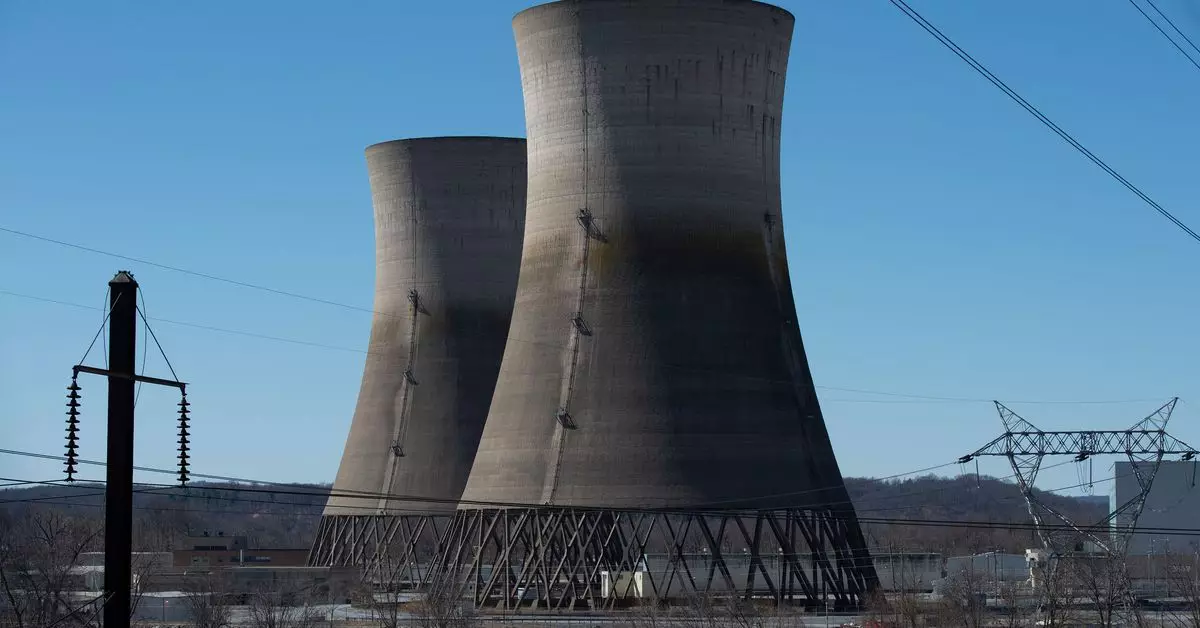In a significant move for both the energy and technology sectors, Microsoft has entered into a power purchase agreement with Constellation Energy to reactivate the famous Three Mile Island nuclear power plant. This development could pave the way for Microsoft to exclusively tap into the output generated by the facility for its ambitious artificial intelligence (AI) data center operations. If the agreement receives the necessary regulatory approvals, the reviving plant is set to begin operations by 2028, marking a noteworthy pivot towards utilizing nuclear energy in the tech industry.
Three Mile Island has a complicated history, primarily due to its association with the most catastrophic nuclear disaster on U.S. soil in 1979. While this past tragedy looms large, the recent decision to revive one of the reactors, which had been inactive since 2019, signals a shift in both perspective and technology. Constellation, the owner of the facility, plans to rebrand the power plant as the Crane Clean Energy Center, named in honor of former Exelon CEO Chris Crane. This new identity may serve as an attempt to establish a more positive narrative around nuclear energy, especially in the context of providing a clean energy source for Microsoft’s expansive data center network.
The resurrected nuclear plant is expected to deliver a considerable output of 837 megawatts, supplying energy to more than 800,000 homes. This surplus reflects the increasing energy demands wrought by Microsoft’s growing operations, particularly in the realm of cloud computing and AI development. However, while this initiative aligns with Microsoft’s goal of achieving 100% renewable energy for its data centers by 2025, it concurrently raises questions regarding the company’s rapidly increasing greenhouse gas emissions attributed to its AI pursuits.
Bobby Hollis, Microsoft’s vice president of energy, expressed optimism about this initiative, labeling it as a stepping stone towards decarbonizing the energy grid. He emphasized the company’s ongoing collaboration with energy providers to develop sustainable sources of energy that align with regulatory requirements while ensuring energy reliability. Nevertheless, critics point out that the choice of nuclear power—a historically controversial energy source—highlights the complexities and challenges of completely transitioning to clean energy solutions.
Microsoft’s commitment to this venture underscores a broader trend within the technology industry, where companies are increasingly investing in next-generation nuclear technologies. By embracing small modular reactors (SMRs), Microsoft envisions a future where nuclear energy could become a staple in sustainable energy solutions. Notably, Bill Gates has been a vocal advocate for nuclear technology, positing that it could be integral to addressing climate change and energy reliability.
The company’s willingness to invest in nuclear power reflects an emerging recognition of the advantages that this energy source holds over traditional fossil fuels. With the pressing nature of climate change and the need for immediate action, established power dynamics within the energy sector are shifting, leading companies to reconsider their energy portfolios.
Despite its optimistic outlook, the revival plan for Three Mile Island is laden with obstacles, most prominently the need for regulatory compliance. Constellation’s proposal awaits approval from the Nuclear Regulatory Commission and requires various local and state permits. The success of these efforts will determine not only the reactivation of the plant, but also the long-term viability of nuclear energy as a competitive and reliable option within the context of sustainable power.
In addition, Constellation has committed a staggering $1.6 billion to reinstate operations, and it plans to pursue a license extension for the plant to sustain its operation for at least another three decades. This financial and administrative commitment lays bare the complex and often expensive hurdles involved in nuclear energy projects.
Microsoft’s agreement with Constellation marks a pivotal moment in the integration of nuclear energy within the tech industry’s efforts to tackle climate change. While there are substantial challenges ahead—including regulatory approvals and public perception—the partnership symbolizes a potential transformation in energy sourcing for data centers, ultimately laying the groundwork for a more sustainable future. As both technology and energy landscapes evolve, Microsoft’s bold foray back into nuclear power could serve as a model for others aiming to balance ambitious growth with environmental stewardship.

